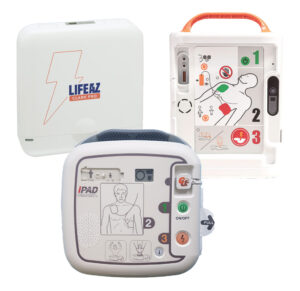Do I Need An AED? Why Every Workplace Should Consider One
As you carry out your first aid needs assessment, you must consider a wide range of factors. Alongside reviewing first aid kits and procedures, one key question always comes up: Do I Need An AED? An Automated External Defibrillator (AED) can mean the difference between life and death during a cardiac arrest, so it’s essential to explore this fully.
Start with a Risk-Based Approach
First and foremost, assess your workplace setup. Ask yourself whether emergency services can realistically reach you in time. While ambulances aim to respond quickly, delays happen. Even in busy cities, traffic or multiple calls can slow arrival. Therefore, having an AED onsite significantly boosts survival chances.
Consider Community Resources, But Don’t Rely on Them
You may already know there’s a community AED nearby or perhaps a neighbouring business has one. Although that’s helpful, it’s not ideal to depend on external sources during a time-sensitive emergency. Instead, your workplace should remain self-reliant whenever possible.
Think About Your Workforce
Now ask yourself another key question: Do I Need An AED based on the people in my building? Absolutely. Cardiac arrests can affect anyone, regardless of age or fitness level. Even young, healthy staff members may have undiagnosed heart conditions. Therefore, protecting your team means preparing for the unexpected.
Location and Accessibility Matter
Next, think about AED placement. Is your building large or split into several areas? If so, you may need more than one unit. Place AEDs in clear, visible, and easily accessible locations. If stored inside a cabinet, ensure it’s unlocked or that the access code is widely known.
Timing Is Critical
Every minute counts during cardiac arrest. Without an AED, survival rates drop by about 10% per minute. So if you wait eight minutes for paramedics, the survival rate can fall below 20%. Conversely, using an AED within one minute may give the person a 90% chance of survival—assuming a shockable rhythm.
Training and Visibility Build Confidence
Even with no prior training, anyone can use an AED. These devices are designed to talk the rescuer through every step. However, training builds confidence. Consider providing basic AED awareness to all employees, not just designated first aiders. The more people who know how to use the AED, the better the outcome.
Follow the Four-Minute Access Rule
Many organisations now follow the “four-minute rule.” This means placing AEDs within a two-minute reach of any location, allowing two minutes for retrieval and return. For smaller single-level workplaces, one unit may suffice. For larger or multi-building sites, multiple AEDs may be necessary.
Still Not Sure? When in Doubt, Get One
Although there are no hard and fast legal requirements in all industries, the guidance is clear. The more AEDs you have, the safer your environment becomes. If budget allows, it’s always wise to install an AED. After all, lives are at stake.
Final Thoughts
In summary, take a proactive approach. Don’t wait until a tragedy prompts you to ask, “Do I Need An AED?” Instead, include AEDs in your risk assessments, choose locations carefully, and ensure your team knows what to do. Ultimately, having an AED on-site can save lives. If you need help selecting the right unit or planning cabinet installations, we’re here to help. Contact us today for expert advice and full product support.


Leave a Reply